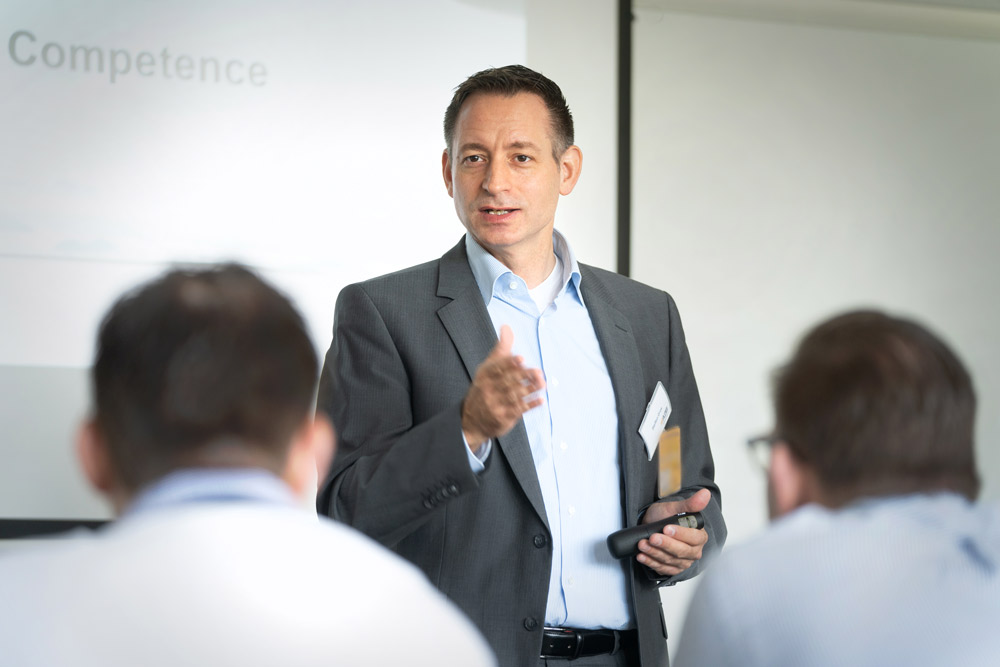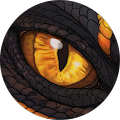Incredibly realistic
Experience
Fly the planes as the pilot, using the official flight simulators
Book your unique Full Flight Simulator experience now. The rhythm of the gaps in the runways pavement, the acceleration during lift off and soft movements during flight maneuvers – you will feel every single detail. The concert of a perfectly calibrated motion system translating every input to authentic movement, high tech visuals and sound systems and a fully functional cockpit in which every button works like in the original plane make this possible. You really see, hear and feel every part of the flight in Level-D certified Full Flight Simulators.
Alle verfügbaren Simulatoren Book now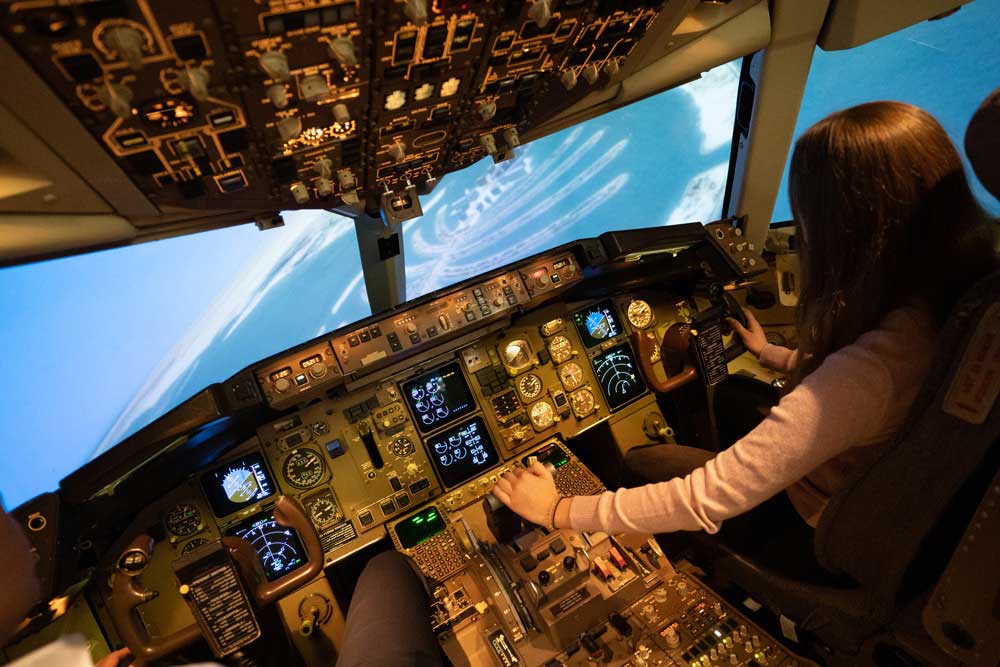
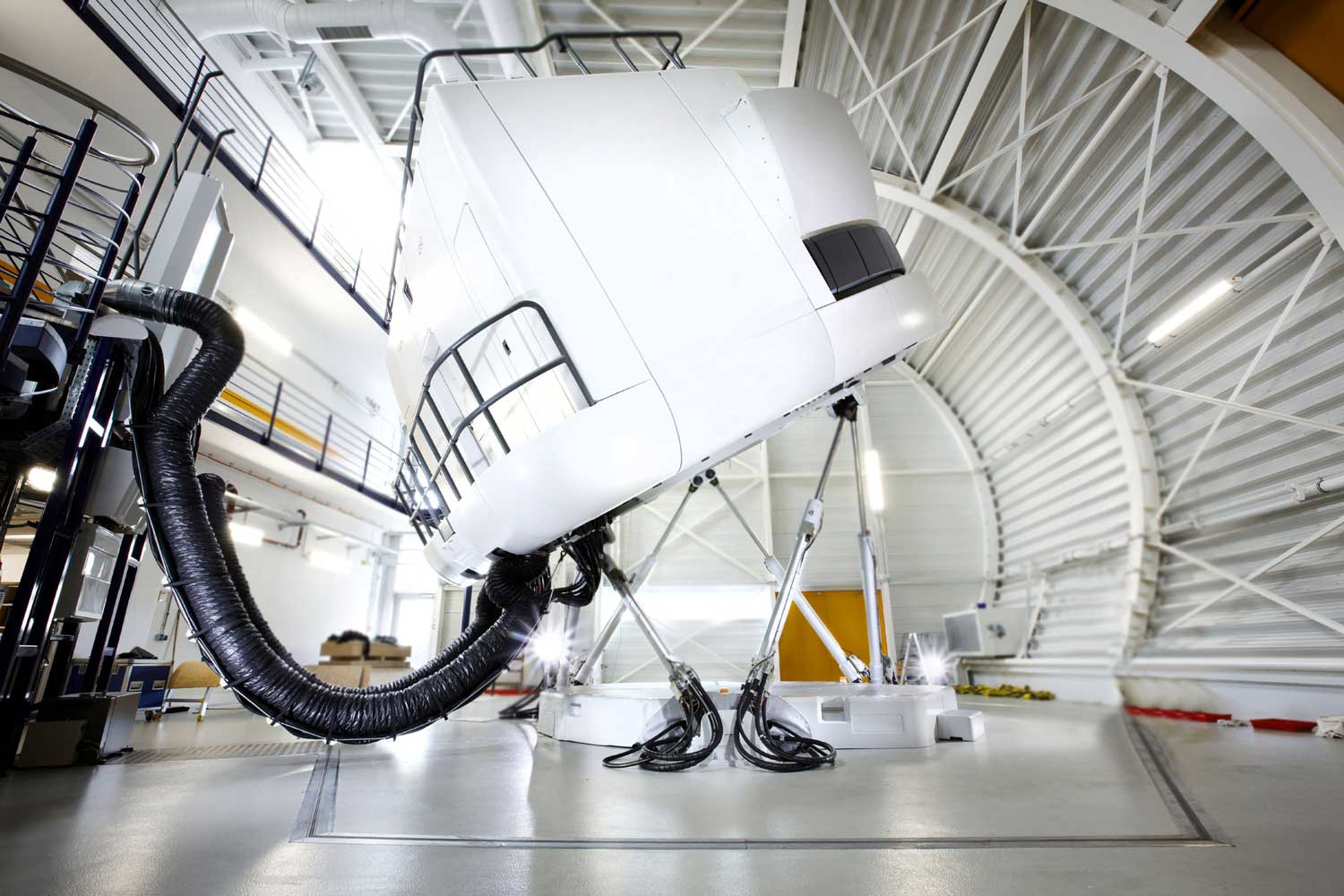
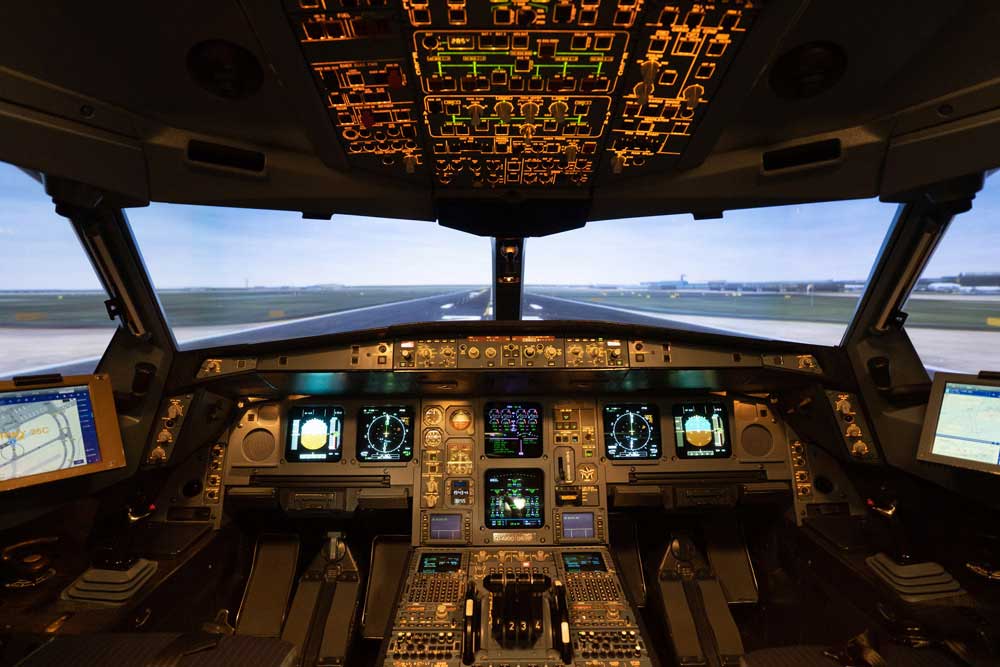
Lufthansa Aviation Training
A unique simulation
Every LAT flight simulator, and there are more than 45, has ben certified by the Luftfahrt Bundesamt (LBA), Germany’s aviation authority, to JAR-FCL1A specifications and reached the highest level, Level-D. Only these simulators reach the specifications for airline pilot training. Every LAT Simulator is an exact duplicate of an existing plane within Lufthansa’s fleet and resembles this plane perfectly.
The Munich-based A320 Full Flight Simulator is an exact copy of Lufthansa’s Airbus A320 with the registration D-AIPA. The high quality and exact representation of real aviation flight is rigorously maintained and checked yearly by the LBA.
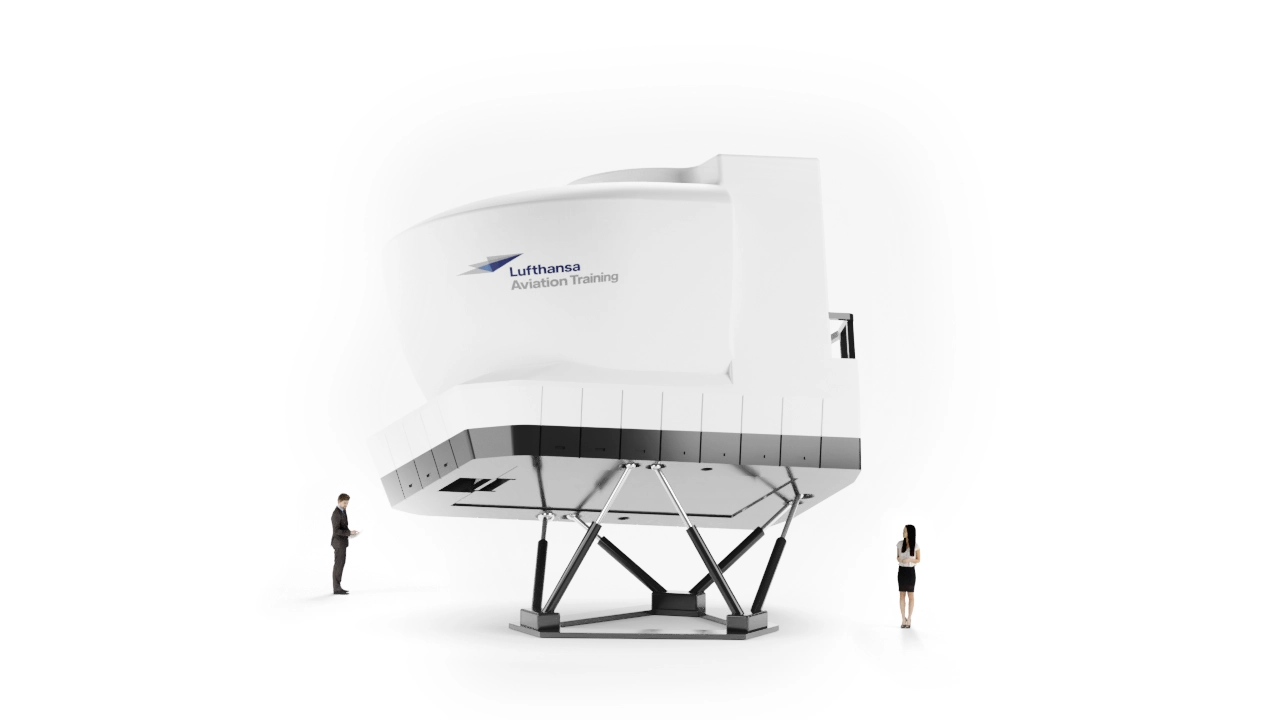
Simulator Technology
The Motion System
Pilots experience aircraft movements very precisely. For a realistic flight simulation, both accelerations and G-forces are necessary. The original cockpit is mounted on a platform that is controlled hydraulically or electrically. To overcome technical limitations, additional simulation techniques are applied. For instance, the cockpit tilting backwards during takeoff simulates rapid acceleration, while tilting forwards during braking, which, combined with visual impressions, is perceived as deceleration. The perceived movements are always aligned with the visual simulation, ensuring that the felt movement matches the "view out of the window" every second.
Simulator Technology
The Visual System
Spatial orientation is crucial for flight safety. The cockpit crew must always know the position of obstacles, mountains, or hilly terrain around the airport, regardless of visibility conditions. The visual system provides more than 180 degrees of satellite-quality visibility, including all critical airport objects. This allows pilots to precisely practise approach procedures in the flight simulator. An example is the old Hong Kong airport, which required special approvals and training in the Full Flight Simulator.
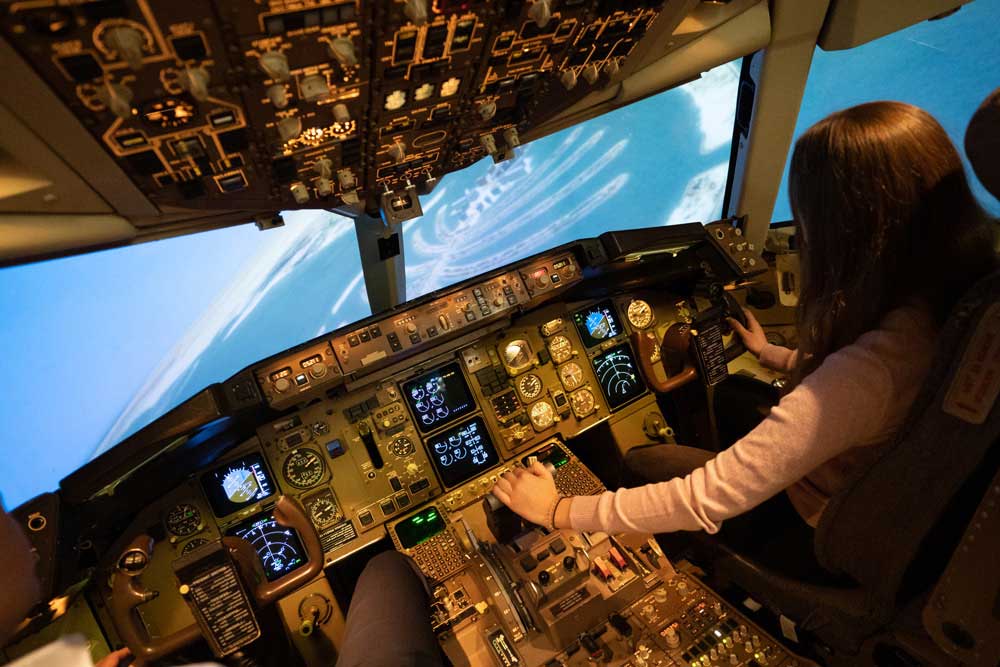
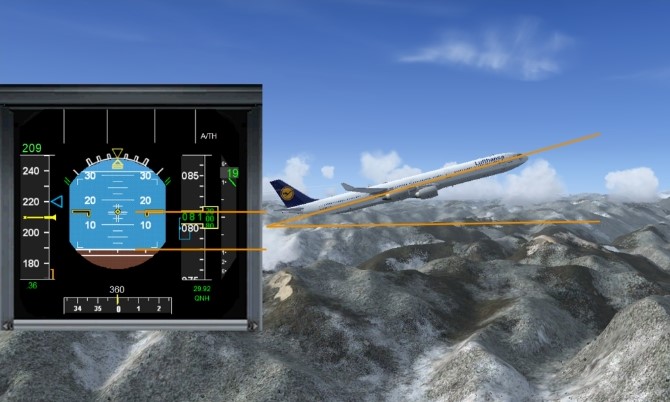
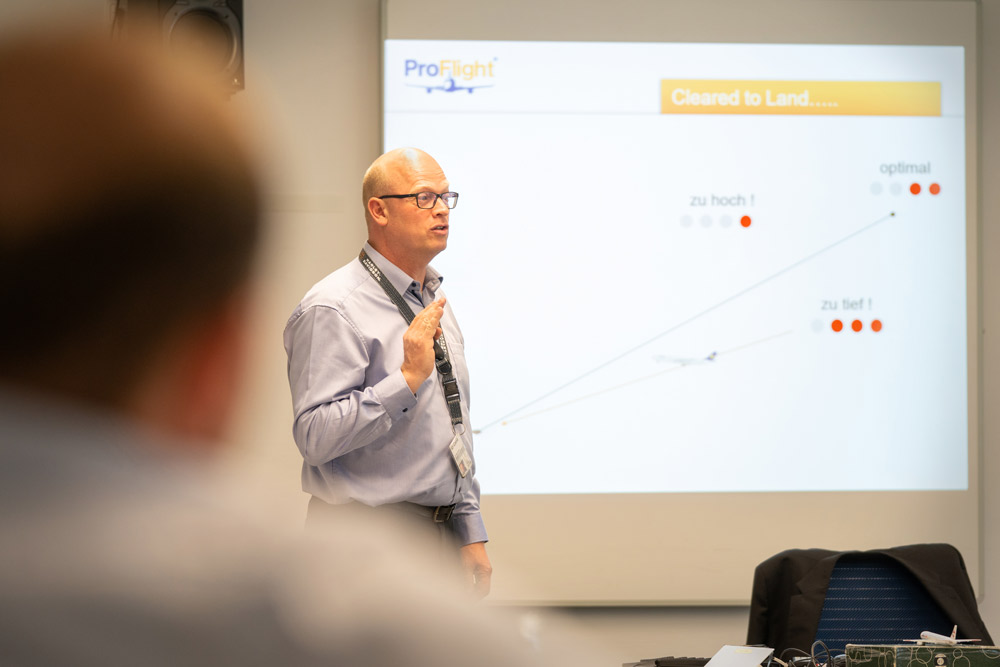
What is Conveyed?
The Briefing
How can a 400-ton airplane take off from the ground, and why is flying considered the safest mode of transport in the world? How is a cockpit structured, and what are all those instruments for? All these exciting questions will be explained by our pilots in a detailed briefing. After a 90-minute briefing, you enter the cockpit of the Full Flight Simulator and know enough to give the right thrust, take off, steer, read the altitude, navigate, and even perform the landing approach – sometimes more, sometimes less successfully. By the way: If you already have prior knowledge and are flying in one of our advanced programs, our airline pilots can of course specifically address your wishes and go through further questions and flight maneuvers with you.
Who Will Supervise Me?
The Instructors
Guided by Experience
Who better to convey the fascination of flying: All 80 ProFlight instructors are long-time, experienced, and for the most part active airline pilots. They have an average of several thousand hours of flight experience. This experience makes them particularly adept trainers – and in addition, a virtually inexhaustible source for exciting and authentic stories and anecdotes from the world of aviation.
